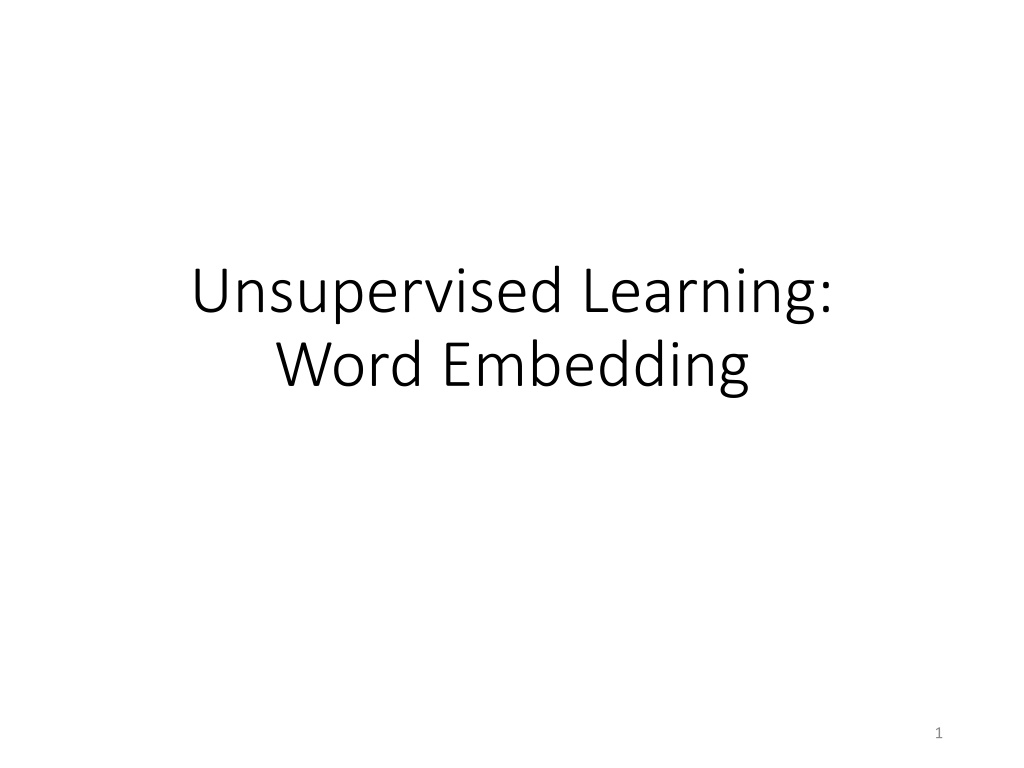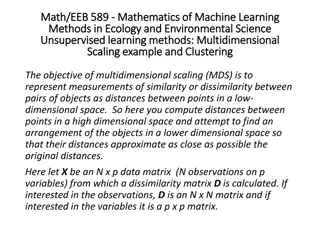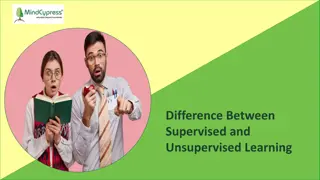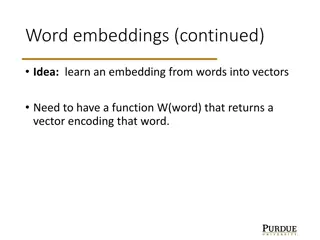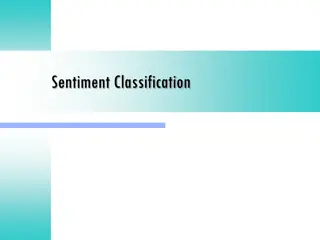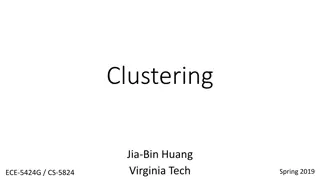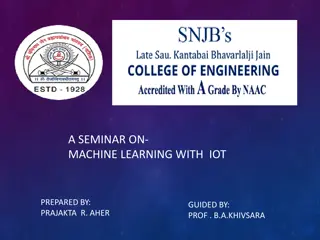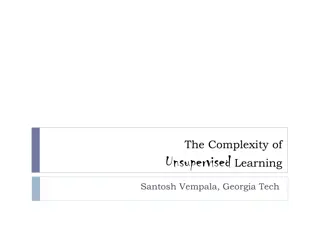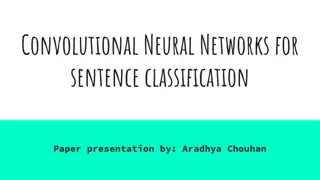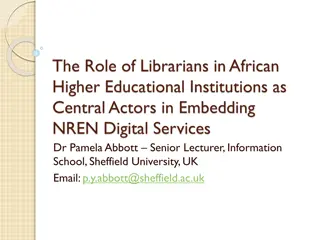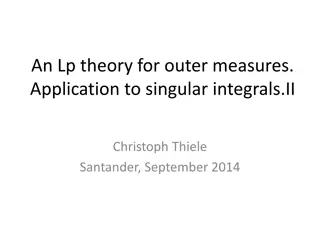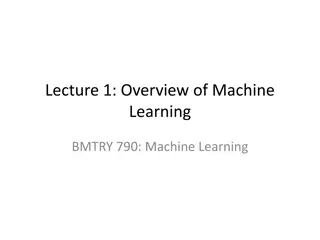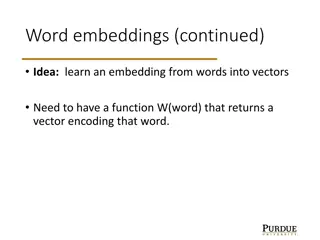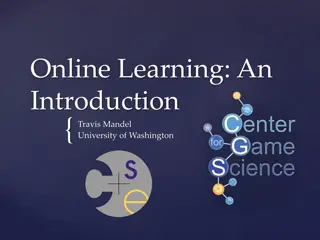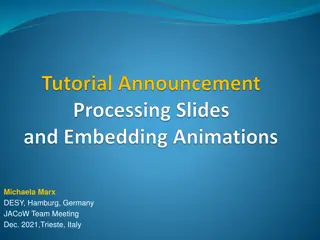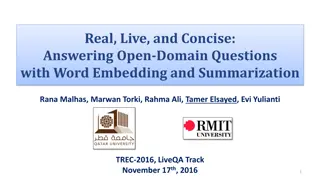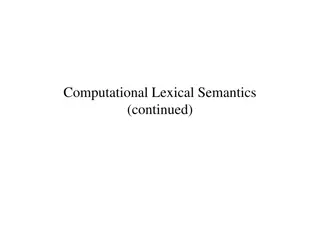Unsupervised Learning: Word Embedding
Word embedding plays a crucial role in unsupervised learning, allowing machines to learn the meaning of words from vast document collections without human supervision. By analyzing word co-occurrences, context exploitation, and prediction-based training, neural networks can model language effectively. The process involves encoding words, building probabilistic language models, and minimizing cross-entropy to enhance understanding and predictions.
Download Presentation

Please find below an Image/Link to download the presentation.
The content on the website is provided AS IS for your information and personal use only. It may not be sold, licensed, or shared on other websites without obtaining consent from the author.If you encounter any issues during the download, it is possible that the publisher has removed the file from their server.
You are allowed to download the files provided on this website for personal or commercial use, subject to the condition that they are used lawfully. All files are the property of their respective owners.
The content on the website is provided AS IS for your information and personal use only. It may not be sold, licensed, or shared on other websites without obtaining consent from the author.
E N D
Presentation Transcript
Unsupervised Learning: Word Embedding 1
Word Embedding Machine learns the meaning of words from reading a lot of documents without supervision Word Embedding tree flower dog rabbit run jump cat
Word Embedding 1-of-N Encoding apple = [ 1 0 0 0 0] dog rabbit bag = [ 0 1 0 0 0] run jump cat = [ 0 0 1 0 0] cat tree dog = [ 0 0 0 1 0] flower elephant = [ 0 0 0 0 1] Word Class Class 2 class 1 Class 3 ran flower tree apple dog jumped cat bird walk
Word Embedding Machine learns the meaning of words from reading a lot of documents without supervision A word can be understood by its context You shall know a word by the company it keeps are something very similar 520 520
How to exploit the context? Count based If two words wi and wj frequently co-occur, V(wi) and V(wj) would be close to each other E.g. Glove Vector: http://nlp.stanford.edu/projects/glove/ V(wi) . V(wj) Ni,j Inner product Number of times wi and wj in the same document Prediction based
Prediction-based Training Neural Network Collect data: Neural Network Minimizing cross entropy Neural Network
Prediction-based - louisee : , , pttnowash : louisee : , pttnowash : https://www.ptt.cc/bbs/Teacher/M.1317226791.A.558.html AO56789: AO56789: linger: AO56789: 0 linger: ( )
Prediction-based Language Modeling P( wreck a nice beach ) =P(wreck|START)P(a|wreck)P(nice|a)P(beach|nice) P(b|a): the probability of NN predicting the next word. P(next word is wreck ) P(next word is a ) P(next word is nice ) P(next word is beach ) Neural Network Neural Network Neural Network Neural Network 1-of-N encoding of START 1-of-N encoding of wreck 1-of-N encoding of a 1-of-N encoding of nice
Bengio, Y., Ducharme, R., Vincent, P., & Jauvin, C. (2003). A neural probabilistic language model. Journal of machine learning research, 3(Feb), 1137-1155.
wi wi-2 wi-1___ Prediction-based 0 z1 z2 1-of-N encoding of the word wi-1 1 0 The probability for each word as the next word wi tree Take out the input of the neurons in the first layer Use it to represent a word w Word vector, word embedding feature: V(w) z2 flower dog rabbit run jump cat z1
You shall know a word by the company it keeps Prediction-based 0 z1 z2 1 0 The probability for each word as the next word wi or should have large probability z2 Training text: wi-1 wi wi-1 z1 wi
Prediction-based Sharing Parameters 0 z1 z2 1-of-N encoding of the word wi-2 1 0 The probability for each word as the next word wi W1 z xi-2 The length of xi-1 and xi-2 are both |V|. The length of zis |Z|. z= W1 xi-2 + W2 xi-1 0 W2 1-of-N encoding of the word wi-1 1 0 The weight matrix W1 and W2are both |Z|X|V| matrices. xi-1 z= W ( xi-2 + xi-1) W1 = W2 = W 12
Prediction-based Sharing Parameters 0 z1 z2 1-of-N encoding of the word wi-2 1 0 The probability for each word as the next word wi 0 The weights with the same color should be the same. 1-of-N encoding of the word wi-1 0 1 Or, one word would have two word vectors. 13
Prediction-based Various Architectures Continuous bag of word (CBOW) model wi-1 wi-1____ wi+1 Neural Network wi wi+1 predicting the word given its context Skip-gram wi-1 ____ wi____ Neural Network wi wi+1 predicting the context given a word
Word Embedding Source: http://www.slideshare.net/hustwj/cikm-keynotenov2014 15
Word Embedding Fu, Ruiji, et al. "Learning semantic hierarchies via word embeddings."Proceedings of the 52th Annual Meeting of the Association for Computational Linguistics: Long Papers. Vol. 1. 2014. 16
Word Embedding ? ??????? ? ?????? ? ???? + ? ????? Characteristics ? ????? ? ?? ? ?????? ? ??? ? ???? ? ????? ? ?????? ? ??????? ? ???? ? ????? ? ????? ? ???? Solving analogies Rome : Italy = Berlin : ? Compute ? ?????? ? ???? + ? ????? Find the word w with the closest V(w) 17
Demo Machine learns the meaning of words from reading a lot of documents without supervision
Demo Model used in demo is provided by Part of the project done by TA: Training data is from PTT (collected by ) 19
Multi-lingual Embedding Bilingual Word Embeddings for Phrase-Based Machine Translation, Will Zou, Richard Socher, Daniel Cer and Christopher Manning, EMNLP, 2013
Document Embedding word sequences with different lengths the vector with the same length The vector representing the meaning of the word sequence A word sequence can be a document or a paragraph word sequence (a document or paragraph) 21
Semantic Embedding Reference: Hinton, Geoffrey E., and Ruslan R. Salakhutdinov. "Reducing the dimensionality of data with neural networks." Science 313.5786 (2006): 504-507 Bag-of-word
Beyond Bag of Word To understand the meaning of a word sequence, the order of the words can not be ignored. white blood cells destroying an infection positive different meaning exactly the same bag-of-word an infection destroying white blood cells negative 23
Beyond Bag of Word Paragraph Vector: Le, Quoc, and Tomas Mikolov. "Distributed Representations of Sentences and Documents. ICML, 2014 Seq2seq Auto-encoder: Li, Jiwei, Minh-Thang Luong, and Dan Jurafsky. "A hierarchical neural autoencoder for paragraphs and documents." arXiv preprint, 2015 Skip Thought: Ryan Kiros, Yukun Zhu, Ruslan Salakhutdinov, Richard S. Zemel, Antonio Torralba, Raquel Urtasun, Sanja Fidler, Skip-Thought Vectors arXiv preprint, 2015.
Acknowledgement John Chou
